Ford Mustang (1999-2004) Service Manual: Exhaust System (Description and Operation)
WARNING: The normal operating temperature of the exhaust system is very high. Never attempt to repair any part of the system until it has cooled. Be especially careful when working around the three way catalytic converter. The temperature of the three way catalytic converter rises to a high level after only a few minutes of engine operation.
CAUTION: When repairing exhaust system or removing exhaust components, disconnect all heated oxygen sensors (HO2S) at the wiring connectors to prevent damage to the heated oxygen sensors and wiring harness. For additional information, refer to Section for location of the heated oxygen sensors.
The exhaust system:
- contains dual three-way catalytic converters.
- has a crossover pipe downstream of the three way catalytic converters (4.6L).
- has two upstream heated oxygen sensors mounted before the three-way catalytic converters.
- the production muffler and tailpipe assembly is a one-piece design exhaust system.
Exhaust System - 3.8L
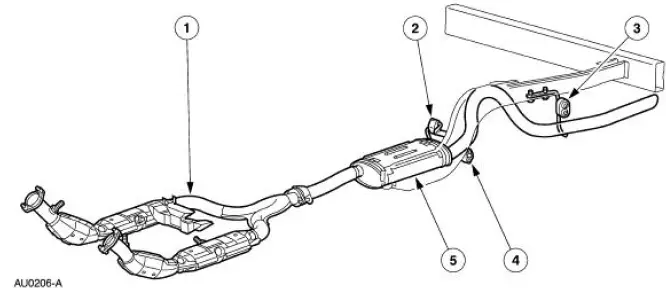
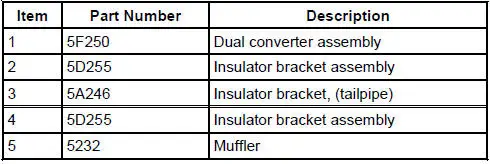
Exhaust System - 4.6L (2V)
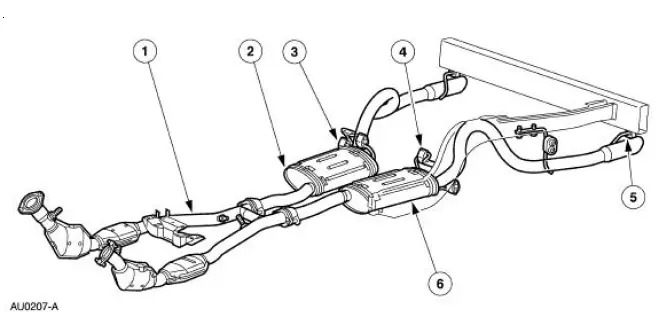
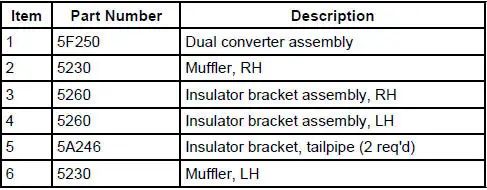
Exhaust System - 4.6L (4V)
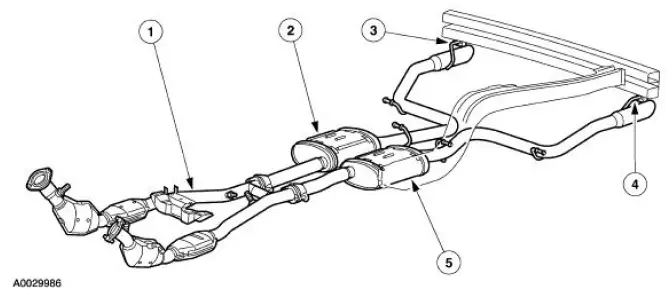
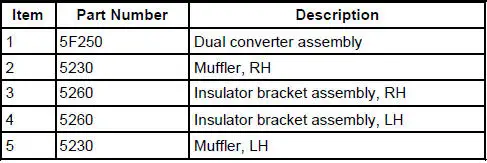
 Exhaust System
Exhaust System
Torque Specifications
...
 Exhaust System (Diagnosis and Testing)
Exhaust System (Diagnosis and Testing)
Symptom Chart
Condition
Possible Sources
Action
Noisy or
leaking
exhaust
Broken or loose
clamps, hangers or
isolators.
Punctures in the muffler
( ...
Other materials:
Actuator - Speed Control Servo
1. CAUTION: Electronic modules are sensitive to static electrical
charges. If exposed
to these charges, damage may result.
Disconnect the battery ground cable.
2. Remove the LH wheel and tire; refer to Section.
3. Position aside the LH front splash shie ...
Stay Pad - Convertible Top
Removal
1. Remove the convertible top material. For additional information, refer to
Convertible Top
Material in this section.
2. Remove the rear window glass. For additional information, refer to
Convertible Top Assembly-
Rear Window Glass in this section. ...
Hydraulic Brake Actuation (Description and Operation)
CAUTION: Blistering or swelling of rubber brake components may indicate
contamination
of the brake fluid by a petroleum based substance. New rubber components must be
installed
in the hydraulic brake system if contaminated and the entire hydraulic ...
